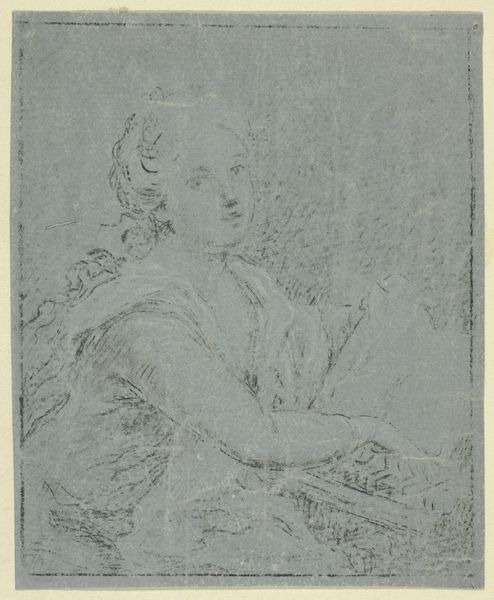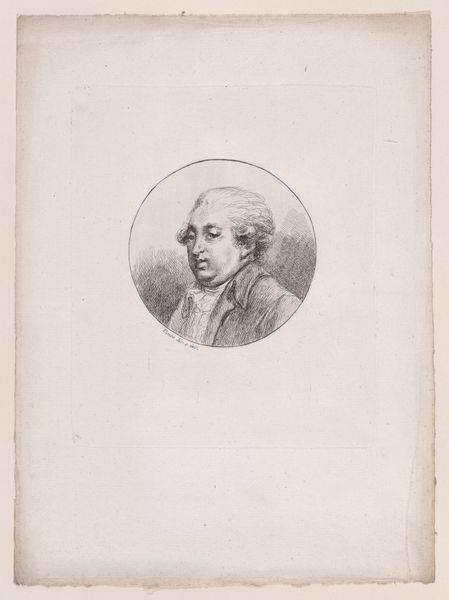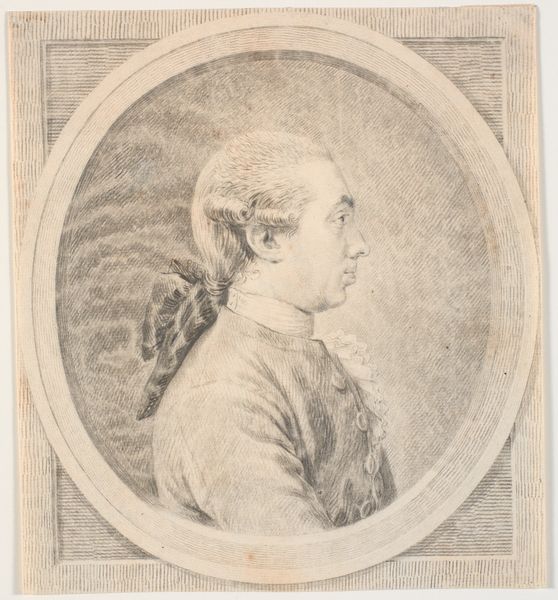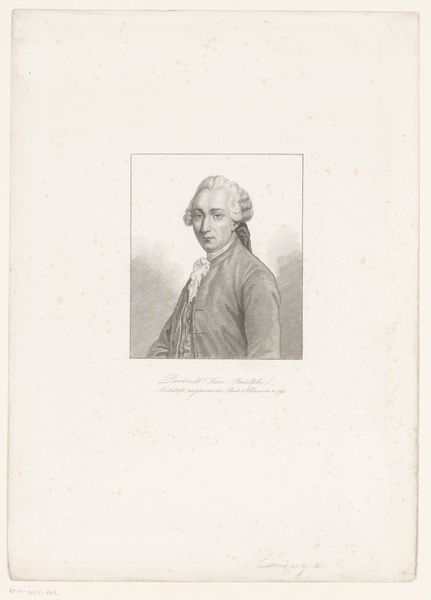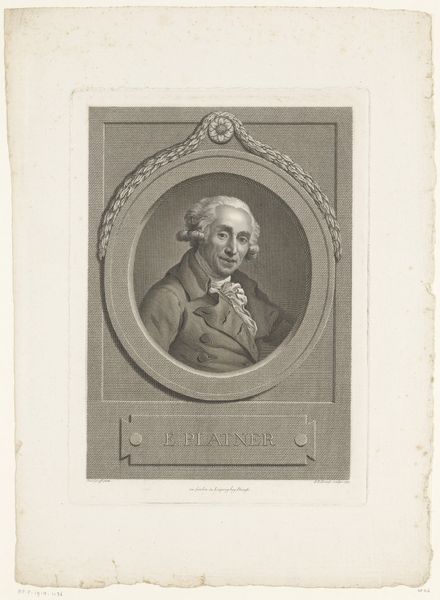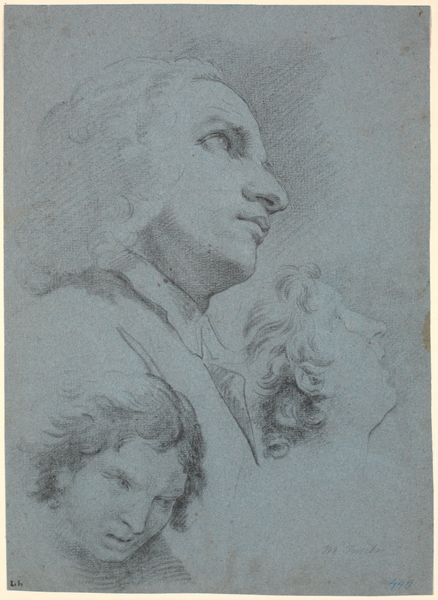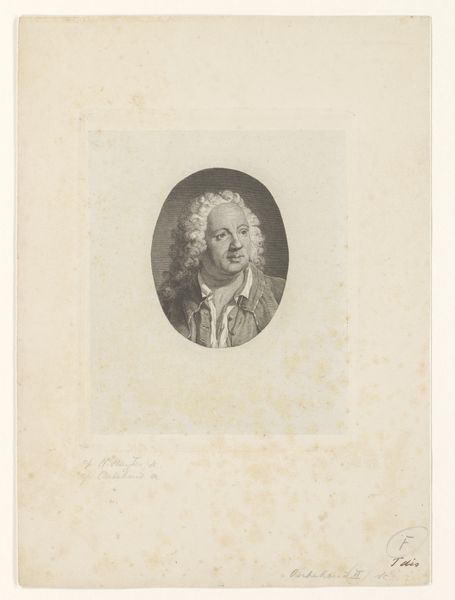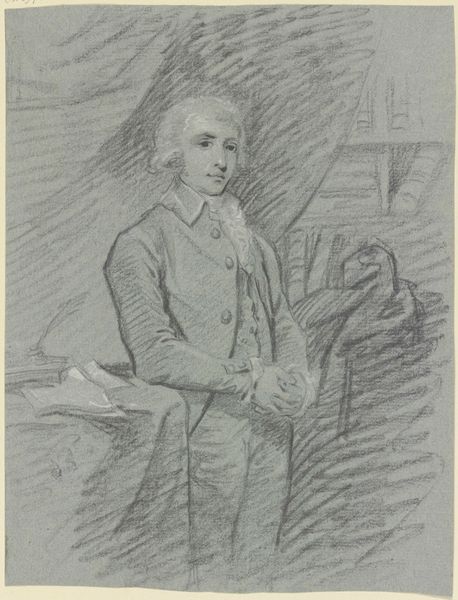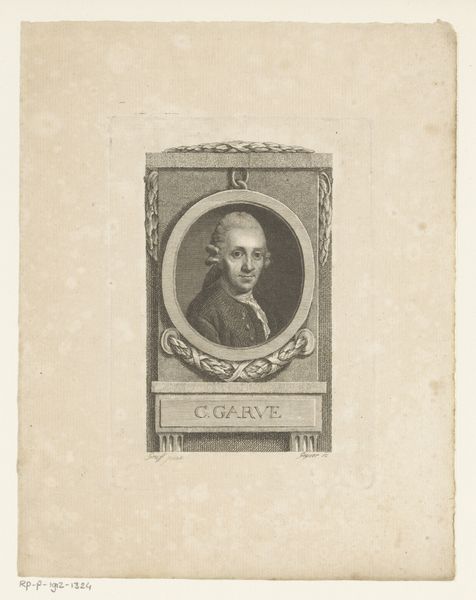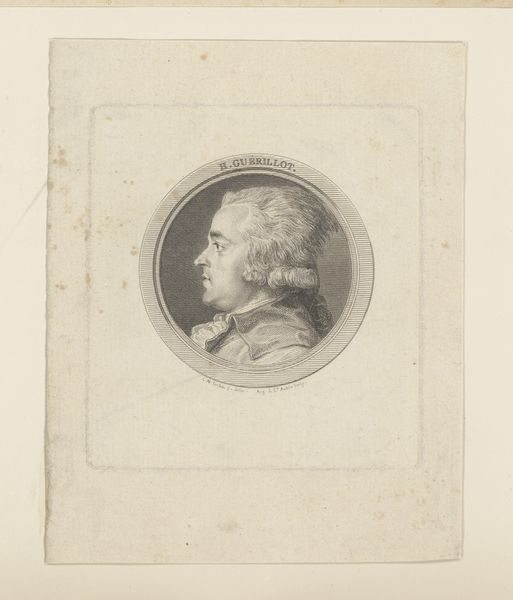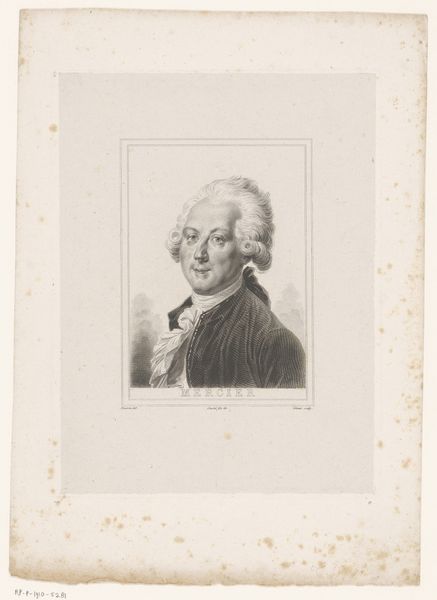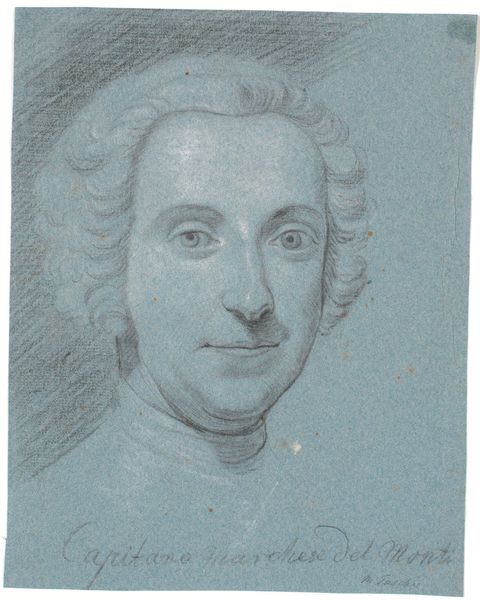
Studie til et portræt af en siddende ung mand med et stykke papir i hånden. Halvfigur en face 1766 - 1769
0:00
0:00
drawing, paper, pencil
#
portrait
#
pencil drawn
#
drawing
#
neoclassicism
#
pencil sketch
#
paper
#
pencil drawing
#
pencil
#
academic-art
Dimensions: 185 mm (height) x 165 mm (width) (bladmaal)
Curator: This drawing by Jens Juel, dating from between 1766 and 1769, is titled "Studie til et portræt af en siddende ung mand med et stykke papir i hånden." Editor: It strikes me immediately as delicate, almost ephemeral. The soft pencil strokes give the young man a gentle, introspective air. Curator: Precisely. The Neoclassical style lends a certain formality, but the medium itself—pencil on paper—hints at the intimacy inherent in portraiture. Observe the subtle rendering of light and shadow that models his face and clothing. It invites an appreciation of form and structure. Editor: And yet, knowing this is a study emphasizes process. One can almost imagine Juel at work, perhaps in his studio, carefully observing the young man. The paper he holds—what significance does that material carry, compared to other potential attributes? Is it a ledger, a letter, something altogether more mundane? Curator: Indeed. Consider, also, how the lines themselves, the raw materials of the drawing, create a sense of movement and energy. Semiotics tell us that even an unfinished sketch carries the artist's intended expression. The composition guides the eye upward toward the sitter's tranquil countenance. Editor: I find myself more focused on the material circumstances: the accessibility of paper and pencil for an artist in the late 18th century, and the inherent connection between labor, artistry, and the rising merchant classes whose status these portraits cemented. How does this object reflect both wealth and changing cultural values? Curator: It seems that we’re seeing this through two lenses: one revealing artistic decisions within the drawing itself, and the other spotlighting material origins and broader socio-economic frameworks. Editor: Exactly. To trace the evolution from material constraints to societal portrayals of prestige offers a crucial layer to understanding such art objects. Curator: Perhaps our divergent readings highlight the enduring capacity of art to embody and engender a wide array of discourse and perception. Editor: Leaving us, hopefully, with much to reflect upon as we view art’s legacy.
Comments
No comments
Be the first to comment and join the conversation on the ultimate creative platform.
